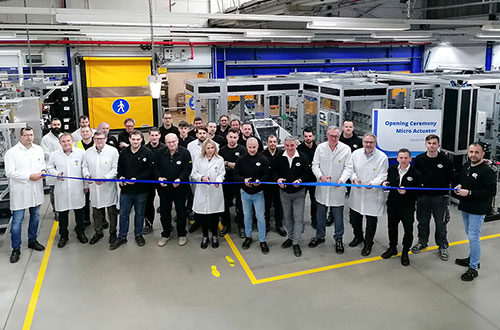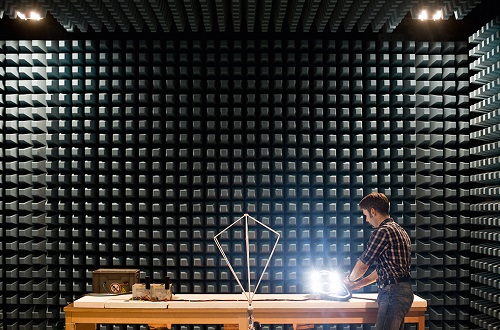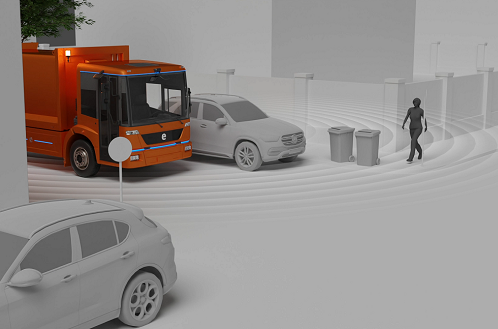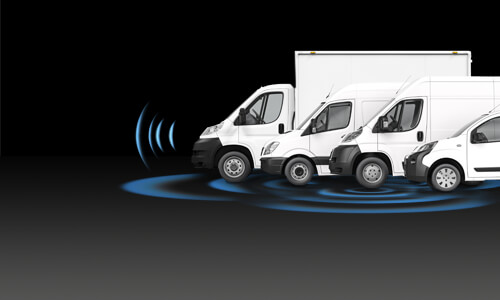|
|
|
|
|
|
|
|
Rain-light sensor (RLS) for steep windscreens
HELLA offers a wide range of intelligent vehicle electronics solutions. This includes a large sensor portfolio, ranging from position sensors, such as accelerator pedal sensors and angular position sensors, to environmental and medium sensors such as level sensors, temperature and fine dust sensors, plus battery sensors and rain-light sensors. HELLA is currently the only supplier offering a combined rain-light sensor for steep windscreens (windscreen inclination of 80° to 90°) - ideal for vehicles such as buses/coaches, agricultural machinery, construction machinery or motor homes, as the requirements differ from vehicles with flat windscreens.
The keypoints in short
- Optical system is specially designed for vehicles with steep windscreens, e.g. trucks, buses/coaches, agricultural machinery, construction machinery and motor homes
- Rain sensor detects rain intensity and regulates the windscreen wiper accordingly. Wiper interval adjusts automatically thanks to an intelligent algorithm.
- Light sensor controls switching on and off of the low beam:
Two independently operating front and ambient light diodes enable reliable differentiation between driving over bridges or through tunnels: when the vehicle traverses a bridge, the low beam is not switched on; when it drives through a tunnel, the low beam comes on automatically. - Optimised design - particularly compact installation space
Safely on the road in any weather
The HELLA rain-light sensor combines rain and ambient light detection in a single sensor. Consequently you can automatically control relevant vehicle functions, such as the wiping frequency and low beam. Forgetting to switch on the low beam by accident is thus a thing of the past. The rain and similarly the light sensor are both based on one single optical system. The rain sensor detects rain intensity and regulates the windscreen wiper accordingly. The wiper interval adjusts automatically in line with the rain intensity by means of an intelligent algorithm – it reacts, for example, to drizzle or to heavy rain. This means that manual intervention by the driver is now more or less unnecessary.
The light sensor controls the switching on and off of the low beam: the homogeneous and large measuring range of the sensor ensures optimum sensitivity. Two independently operating front and ambient light diodes enable reliable differentiation between driving over bridges or through tunnels. When the vehicle traverses a bridge, the low beam is not switched on; when it drives through a tunnel, the low beam comes on automatically.
The compact and light sensor measures 49 mm x 25.75 mm and weighs less than 42 g. It communicates bidirectionally via the LIN (Local Interconnect Network) interface. The light function covers all requirements up to ASIL B (ISO 26262). The sensor parameters and also the sensor sensitivity can be tailored to suit customer needs.
Is an automatic light system mandatory?
From 19 July 2018, the legislator prescribes an automatic light system: From then on, it is compulsory that all new vehicle developments in the EU are equipped with an automatic light system in accordance with the EU decision ECE-R48. Other countries, such as China, already have corresponding regulations (AGB 4785-2019).
Canada introduced an addition to the Canada Vehicle Lighting Regulation from 1 September 2021 that the light function is mandatory when starting the car.
Canada applies this regulation to all newly registered cars, vans, trucks, pick-up trucks and motorbikes.
The RLS light function can be designed in accordance with ISO 26262 ("Road vehicles - Functional safety") ASIL.
For more information visit our rain-light sensor for steeply raked windscreens product page.




